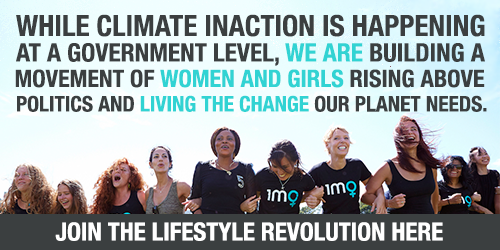We hear about islands of plastic floating around the ocean, but what exactly are these patches? How did they get there? And what's in them?
A truckload of plastic enters the ocean every minute, which is a pretty scary thought. We've all seen photos shared on social media of decades old plastic packaging washing up on a beach halfway around the world from where it was used and discarded. So, how does all this plastic rubbish end up in big patches in the middle of the ocean?
Essentially, the rubbish islands form within what are called "ocean gyres". There are 5 major ocean gyres on Earth. They're large systems of ocean currents created by global winds and tides. We've got: the North and South Pacific Gyres, the North and South Atlantic Gyres, and the Indian Ocean Gyre. They collect and concentrate marine debris into these patches. There are three forces that cause the circulation: global wind patterns, the Earth's rotation, and landmasses.
The movement of the major ocean gyres helps drive the "ocean conveyor belt" which circulates water over the ocean. That's why we can throw a bottle with a letter in it from the Atlantic Coast and it could eventually wash up somewhere in the Pacific, which is cool but means that plastics are circulating all over the planet. Not so cool, unfortunately. And the plastics that don't circulate end up forming patches. All of those major gyres currently have garbage patches.
What do I mean when I say "the plastics that don't circulate"? Well, even though ocean gyres circulate, they circulate around large areas of stationary, calm water. Our plastic debris can drift into those stationary areas and since there's relatively little movement in those regions, the plastic begins to accumulate. It happens slowly.
There's somewhere between 1.15 million to 2.41 million tonnes of plastic entering the ocean every year from rivers. A lot of this plastic won't sink once it enters the sea because it's less dense than the ocean water. And the stronger, more buoyant plastics get transported large distances – they're persistent, that's for sure. They keep floating over the sea surface until they accumulate in a patch. And once they're in the patch, they're basically there to stay.
Of the five plastic islands in the world, The Great Pacific Garbage Patch (GPGP) is the biggest patch out there . Currents flowing along the west coast of America and the east coast of Asia feed into this patch located halfway between Hawaii and California. It's estimated to be 1.6 million square kilometers, which to give you a bit of perspective, is 2 times the size of Texas or 3 times the size of France!
There are at least 1.8 trillion pieces of plastic in the patch, which is about an estimated 80,000 tonnes - that's the same weight as 500 jumbo jets! It also adds up to 250 pieces of plastic debris for every single human in the world. And 1.8 trillion pieces is just a mid-way estimate – that means that the amount could be slightly less - 1.1. trillion pieces - or as great as 3.6 trillion pieces.
What kind of plastic makes up that number? 94% of the total object count is made up of microplastics – plastics ranging from 0.05 - 0.5 centimeters. And almost half of the total mass is made of fishing nets. But it's important to clean up as many pieces of large debris as we can in order to prevent them from getting caught in gyres. The longer they stay in these patches, the more likely they are to break down into smaller plastics. Microplastics have been discovered not only floating on or near the ocean's surface, but also as far down as the ocean floor. They're nasty little things as not only are they very difficult to remove, but marine animals often mistake them for food or become entangled in some of it. Meanwhile, plastic, also harms our food chain and our economy, because Chemicals in plastic enter the body of the animal feeding on the plastic. When that feeder become prey, the chemicals also pass on to the predator. This follows the food chain to humans.
It is so crucial for us to reduce our plastic usage. There are tons of ways we can start reducing plastic in our everyday lives from our kitchen to our bathrooms and everywhere in between. But you can start here!
Read next: Avoiding single-use plastics: Small actions with BIG impacts.
By Haiden Lancaster
Haiden Lancaster is an American college student pursuing a sustainable lifestyle. Whether it's climbing a mountain in Tasmania, studying architecture in Paris or just spending time in the garden, she's always on the lookout for better ways to be a friend to the environment.

